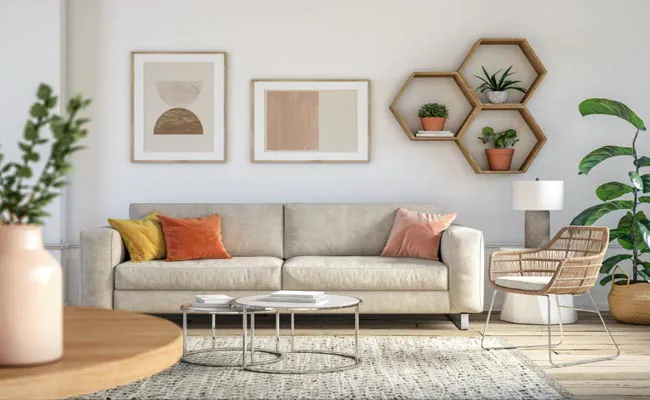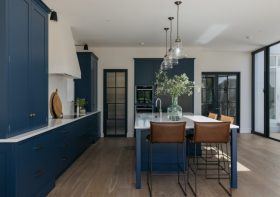5 Important Tips for Best Home Decoration

Decorating your home is an extremely personal experience. You can express yourself, your personality and create an environment that reflects you. It can be overwhelming, as there are so many design trends and options to choose from. We’ve put together five tips to help you navigate home decor and create an area that you love.
1. Understanding Your Style:
It’s important to know your personal style before you start decorating. Your home should reflect your personality and taste. Explore different styles of design, from minimalist to contemporary to traditional to bohemian. You can find inspiration from magazines, social media platforms such as Pinterest and Instagram and even nature and your travels.
Create a moodboard or folder of images that reflect your personal style. Be sure to pay attention to elements such as color schemes, furniture styles, and textures. This exercise helps you to clarify your preferences, and will set the foundation of your home decorating journey.
Don’t forget that your style can change over time. So don’t hesitate to experiment with new decor elements. It’s important to create an environment that inspires you and feels authentic.
2. Prioritize Functionality:
Although aesthetics is important, functionalities should also be considered when decorating your home. Your home should be beautiful and also meet your practical needs. Consider how and by whom each room will likely be used before making design decisions.
If you have young children and a busy household, it is important to prioritize materials that are durable and easy to clean in areas with high traffic, such as the kitchen and living room. Furniture that is stylish, comfortable and has plenty of storage will help you to reduce clutter.
If you work at home, designate a workspace conducive to focus and productivity. Select a quiet area away from distractions. Invest in a comfortable desk and chair. Personalize your space with decor that inspires you.
Prioritizing functionality will not only improve your quality of living but also create a more functional home.
3. Take advantage of color and texture:
Color and texture can be powerful tools for home decor, capable of changing a room and evoking emotions. Consider the mood that you want to create for each room when choosing colors. For bedrooms and relaxation spaces, soft, muted colors like neutrals and pastels can help create a calm, tranquil atmosphere. Bold, vibrant colors add personality and energy to areas like the dining room or living area.
Do not be afraid to use color. However, you should keep in mind that it is important to maintain a balance between the colors and to avoid overpowering your senses. Use accent walls or accessories as a way to add color while keeping the larger surfaces, such as walls and furniture, more neutral.
Texture is just as important as color in creating depth and visual interest for your home decor. Mix and match textures such as wood, metals, fabric, and glass to create an inviting and layered space. Soft textiles such as rugs, cushions, and throws can add warmth and comfort to a room. Don’t forget to incorporate natural elements, like plants and greenery.
4. Attention to scale and proportion:
A common mistake made in decorating a home is to ignore scale and proportion. This can lead to an unbalanced, disjointed appearance. It’s crucial to take into account the size of your space when choosing decor and furniture for your home.
Measure the dimensions of the rooms and create a floorplan to determine the best layout. Select furniture that fits the room’s size without being too large. In a small living area, for example, choose a compact couch and armchairs that have slender profiles in order to maximize seating space without sacrificing any space.
Pay attention to the size of accessories such as artwork, lighting fixtures, and mirrors. In a large room, a large statement piece will make an impact. Smaller accents will add interest to the space without overwhelming it.
You can create an environment that is both visually pleasing and comfortable by paying attention to the scale and proportion.
5. Accessorize your home with accessories:
Accessories add personality to your decor. Accessories are a great way to show off your hobbies, interests and memories. They make your home feel unique.
Consider the symbolic value of accessories when choosing them for your home. Display items with sentimental value, such as family photos, souvenirs from travels or heirlooms passed down from generation to generation. Include elements that are reflective of your hobbies and passions, such as a collection or musical instruments.
Don’t forget the power of style to enhance your decor. To create visual interest, experiment with different arrangements, textures, and heights. Layering items on shelves or tabletops and mixing finishes and materials can create a dynamic appearance.
Balance is the key to successful accessorying. Avoid cluttering surfaces with too much stuff and make sure to edit your collection frequently. This will keep it fresh and well-curated.
Conclusion:
Every choice you make in home decoration reflects the unique style and personality of your family. Following these five tips will help you create a beautiful space that is also functional, comfortable and uniquely yours.
Don’t forget to understand your personal style, prioritise functionality when making design choices, and use color and texture to create visual interest. To create a balanced environment, pay attention to the scale and proportions. Personalize your decor by adding meaningful accessories to tell your story.
These guidelines will help you to create a home that feels truly like your own.




Leave a Reply